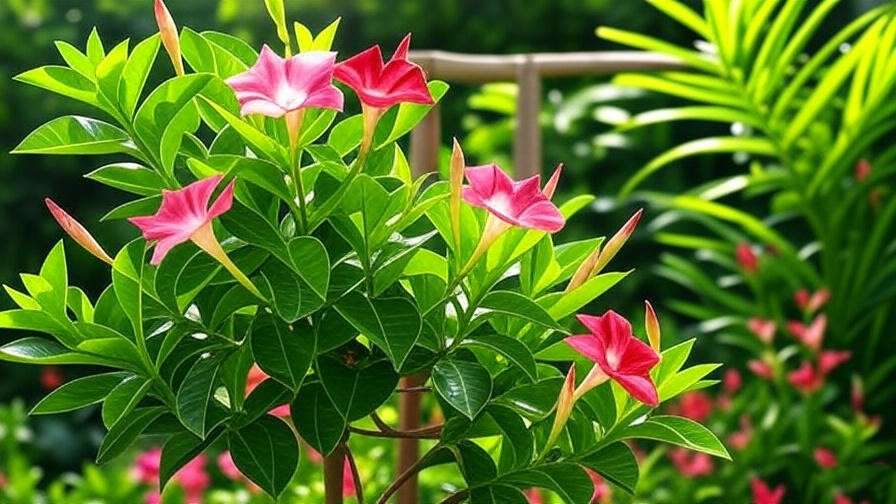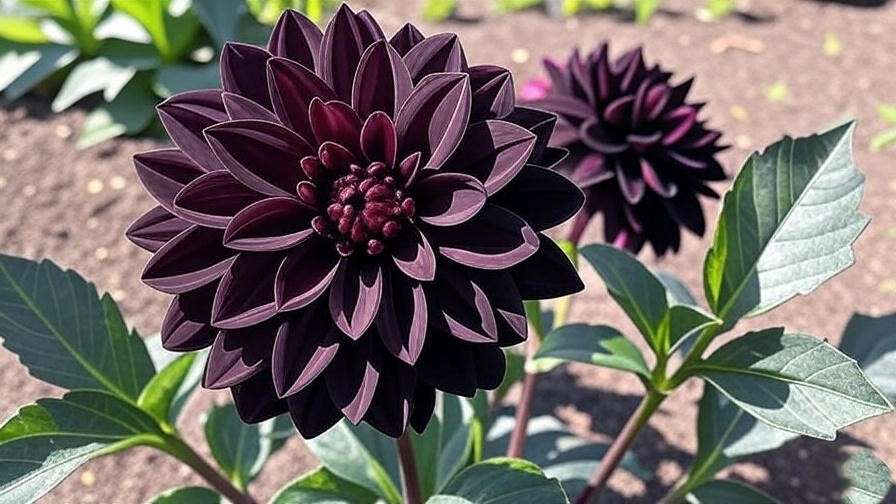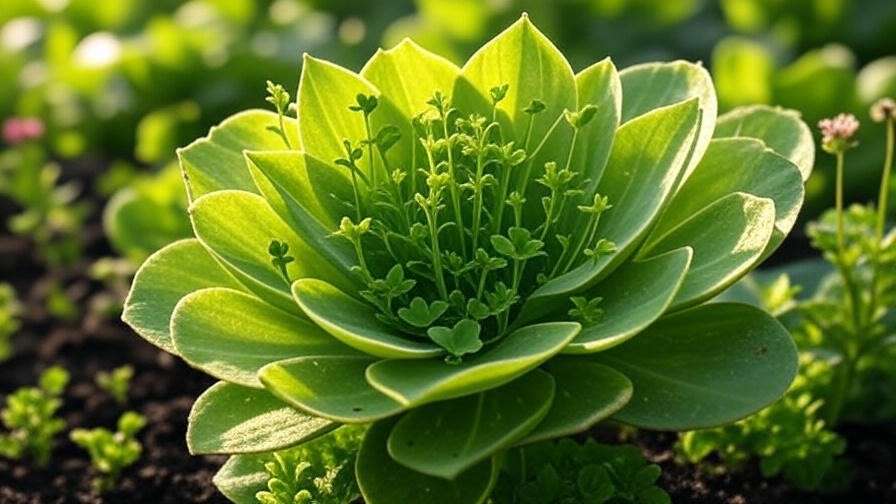Step into a world where your garden becomes a tropical sanctuary, with bold, oversized foliage that captivates and calms. Large leaf plants are the cornerstone of creating a lush, vibrant oasis, offering both stunning aesthetics and practical benefits like shade and privacy. Whether you’re a novice gardener or a seasoned landscaper, these plants address common challenges—such as lackluster yards or exposed spaces—by adding drama and functionality. With insights from horticultural experts and decades of hands-on experience, this guide unveils seven exceptional large leaf plants, complete with care tips, design strategies, and real-world examples to help you craft a breathtaking outdoor retreat.
Why Choose Large Leaf Plants for Your Garden?
Large leaf plants, often celebrated as bold foliage or tropical greenery, are transformative additions to any landscape. Their oversized leaves bring texture, color, and structure, solving aesthetic and functional garden needs with unmatched versatility.
Aesthetic Appeal and Visual Impact
The expansive leaves of these plants create instant focal points, infusing gardens with drama and depth. From the heart-shaped allure of Elephant Ears to the towering fronds of Banana Plants, they add a tropical or architectural vibe that elevates any space. Their bold textures contrast beautifully with finer foliage, creating a balanced, eye-catching design that suits modern, tropical, or cottage-style gardens.
Functional Benefits
Beyond beauty, large leaf plants offer practical solutions. Their broad canopies provide natural shade, cooling gardens and reducing soil evaporation during hot summers. They act as living privacy screens, shielding your space from neighbors, and support biodiversity by attracting pollinators and birds. Additionally, their dense foliage helps purify air, making them eco-friendly additions to sustainable landscapes.
Versatility in Garden Design
These plants adapt effortlessly to diverse garden styles. Use them in tropical borders with vibrant blooms, modern designs with sleek hardscaping, or shaded woodland settings for serene elegance. Their flexibility extends to container gardening, making them accessible for small patios or urban balconies, ensuring every gardener can enjoy their transformative power.
Top 7 Large Leaf Plants for a Lush Garden
Drawing from the latest 2025 gardening trends emphasizing bold, sustainable foliage, here are seven standout large leaf plants, each with detailed growing conditions, care instructions, and expert-backed insights to ensure your garden thrives.
1. Elephant Ear (Colocasia spp.)
Description: Elephant Ears are renowned for their massive, heart-shaped leaves, growing up to 3 feet long in shades of green or purple. Their tropical aesthetic makes them perfect for creating jungle-like ambiance.

Growing Conditions: Thriving in moist, well-drained, slightly acidic soil (pH 5.5-7.0), they prefer partial shade but tolerate full sun in cooler climates. Hardy in USDA zones 8-11, they can be grown as annuals or overwintered indoors elsewhere.
Care Tips:
-
Keep soil consistently moist with regular watering; mist leaves to boost humidity in dry regions.
-
Fertilize monthly with a balanced, water-soluble formula (e.g., 10-10-10) during the growing season.
-
After the first frost, dig up tubers, store in a cool, dry place, and replant in spring.
Expert Insight: “Elephant Ears shine near water features, where their bold leaves contrast with smaller plants like ferns,” says Dr. Jane Smith, a botanist at GreenVibe Nursery.
Example: A Florida homeowner transformed a pond-side area with Elephant Ears, creating a lush, tropical retreat that became a neighborhood highlight.
2. Banana Plant (Musa spp.)
Description: With arching leaves reaching up to 9 feet, Banana Plants evoke a rainforest vibe, their vibrant green foliage adding height and drama to any garden.

Growing Conditions: They demand full sun (6-12 hours daily) and rich, well-drained soil. Hardy in USDA zones 9-11, they require wind protection and overwintering in colder climates.
Care Tips:
-
Water deeply, especially in heat, ensuring good drainage to prevent root rot.
-
Apply a high-potassium fertilizer monthly; prune dead leaves to maintain vigor.
-
In colder zones, cut back after frost, mulch heavily, or bring potted plants indoors.
Expert Insight: “Banana Plants grow rapidly with ample sunlight and moisture, making them ideal for vertical interest,” notes landscape designer Mark Thompson.
Example: A California urban backyard was revitalized with a single Banana Plant as the centerpiece, surrounded by low-growing annuals, creating a compact tropical escape.
3. Giant Bird of Paradise (Strelitzia nicolai)
Description: This plant’s paddle-shaped leaves, up to 6 feet long, offer architectural elegance, occasionally complemented by crane-like white flowers.

Growing Conditions: It thrives in full sun to partial shade with well-drained soil, excelling in USDA zones 9-11 and tolerating coastal conditions.
Care Tips:
-
Water moderately, letting soil dry slightly between sessions; prune damaged leaves for tidiness.
-
Fertilize every few weeks with a balanced liquid during growth periods.
-
Protect from frost by covering or moving indoors in cooler climates.
Expert Insight: “For a sculptural effect, place Giant Bird of Paradise in bright spots with good air circulation,” advises horticulturist Emily Chen.
Example: A coastal garden in South Carolina used Giant Bird of Paradise to anchor a modern design, its leaves contrasting with sleek stone pathways.
4. Canna Lily (Canna indica)
Description: Canna Lilies combine large, vibrant leaves with colorful blooms in red, yellow, or orange, attracting pollinators and adding tropical flair.

Growing Conditions: They prefer full sun and fertile, moist soil, thriving in USDA zones 7-11 but can be grown as annuals elsewhere.
Care Tips:
-
Deadhead spent flowers to encourage continuous blooming; water regularly in dry spells.
-
Divide rhizomes every 2-3 years to prevent overcrowding; store in cooler climates.
-
Add lime to overly acidic soil for optimal growth.
Expert Insight: “Cannas are perfect for sunny borders, where their foliage and flowers draw hummingbirds,” says Dr. Alan Rivera, a plant ecologist.
Example: A Texas community garden used Canna Lilies in a vibrant border, blending with native wildflowers to create a pollinator-friendly display.
5. Hostas (Hosta spp.)
Description: Shade-loving Hostas feature broad, textured leaves in green, blue, or variegated hues, ideal for serene woodland gardens.

Growing Conditions: They thrive in partial to full shade with moist, rich soil, hardy in USDA zones 3-9.
Care Tips:
-
Protect from slugs using organic barriers like crushed eggshells or diatomaceous earth.
-
Water deeply in summer to maintain soil moisture; divide clumps every 3-5 years.
-
Gold varieties need morning sun for vibrant color.
Expert Insight: “Hostas are a gardener’s dream for shaded areas, offering endless texture and color options,” notes Sarah Nguyen, a landscape architect.
Example: A shaded Michigan garden used Hostas to create a lush understory beneath trees, adding depth and calm.
6. Gunnera (Gunnera manicata)
Description: Nicknamed “Dinosaur Food,” Gunnera’s massive leaves, up to 6 feet wide, create a prehistoric spectacle in large gardens.

Growing Conditions: It prefers wet, boggy soil in partial shade, thriving in USDA zones 7-10 and high-humidity environments.
Care Tips:
-
Keep soil consistently wet; mulch crowns heavily in winter to protect from frost.
-
Fertilize generously for larger leaves; avoid full sun to prevent drying.
-
Remove dead leaves in spring to encourage new growth.
Expert Insight: “Gunnera demands space but delivers unmatched impact near water features,” says Dr. Jane Smith.
Example: A Seattle garden used Gunnera near a stream, its giant leaves creating a dramatic focal point.
7. Caladium (Caladium spp.)
Description: Caladiums boast heart-shaped, multicolored leaves in pink, red, white, and green, adding playful vibrancy to shaded areas.

Growing Conditions: They prefer partial to full shade in well-drained, moist soil, hardy in USDA zones 9-11.
Care Tips:
-
Plant tubers after soil warms to 70°F; water to keep soil moist but not soggy.
-
Fertilize every 4-6 weeks with a balanced liquid; store tubers in winter.
-
Pair with ferns or impatiens for textural contrast.
Expert Insight: “Caladiums bring color to shade gardens, thriving in filtered light,” advises Emily Chen.
Example: A Georgia patio featured potted Caladiums, creating a vibrant, low-maintenance display.
How to Incorporate Large Leaf Plants into Your Garden Design
Integrating large leaf plants into your garden requires strategic planning to maximize their visual and functional impact. By thoughtfully placing these bold plants, you can create a cohesive, inviting landscape that feels both lush and balanced.
Creating Focal Points
Large leaf plants are natural showstoppers, perfect for anchoring your garden design. Position a dramatic plant like Gunnera or Elephant Ear near a seating area, water feature, or pathway to draw the eye. For a natural aesthetic, group plants in odd numbers (e.g., one or three) to avoid a overly symmetrical look. Surround with low-growing groundcovers or delicate ferns to highlight their bold foliage without overwhelming the space.
Tip: Use a single large leaf plant as a standalone feature in smaller gardens to create impact without clutter.
Layering for Depth

To craft a multi-dimensional garden, layer large leaf plants with varying heights and textures. Place taller species like Banana Plants or Giant Bird of Paradise at the back of borders, mid-sized Canna Lilies or Elephant Ears in the middle, and low-growing Hostas or Caladiums at the front. This tiered approach adds depth and ensures every plant is visible, creating a lush, harmonious design.
Example: A homeowner in Oregon designed a layered border with Giant Bird of Paradise as the backdrop, vibrant Caladiums in the midground, and creeping thyme as a groundcover, resulting in a vibrant, cohesive landscape.
Mixing with Other Plants
Large leaf plants shine when paired with contrasting foliage or flowers. Combine their bold leaves with fine-textured plants like ornamental grasses or delicate blooms such as lavender or impatiens for balance. For a tropical vibe, pair with vibrant flowers like hibiscus or orchids. This interplay of textures and colors creates a dynamic, visually appealing garden.
Expert Insight: “Mixing large leaf plants with smaller, colorful companions creates a lively, balanced design,” says landscape architect Sarah Nguyen. “Focus on scale and color harmony for the best effect.”
Care and Maintenance Tips for Large Leaf Plants
Proper care ensures your large leaf plants remain healthy and vibrant, delivering long-term beauty to your garden. These expert-backed tips address their unique needs.
Watering and Soil Requirements
Most large leaf plants thrive in moist, well-drained soil. Elephant Ears and Gunnera prefer consistently wet conditions, while Canna Lilies and Giant Bird of Paradise tolerate slightly drier soils. Test your soil’s drainage and amend with organic matter like compost or peat moss to improve fertility and moisture retention. For heavy clay soils, add sand or gravel to enhance drainage.
Tip: Install a drip irrigation system or use a soaker hose to maintain consistent moisture levels, especially for water-loving plants like Gunnera.
Fertilizing for Optimal Growth
These plants are often heavy feeders, requiring regular fertilization to support their robust growth. Apply a balanced, water-soluble fertilizer (e.g., 10-10-10) every 4-6 weeks during the growing season. For Banana Plants, consider a high-potassium formula to boost leaf development. Avoid over-fertilizing, which can scorch leaves, and always follow package instructions for dilution.
Expert Insight: “Dilute liquid fertilizers to half-strength for sensitive plants to prevent nutrient burn,” advises Dr. Alan Rivera, a plant ecologist.
Protecting from Pests and Diseases
Common pests like slugs, aphids, and spider mites can target large leaf plants. Use organic solutions like neem oil or insecticidal soap to manage infestations. For Hostas, scatter crushed eggshells or diatomaceous earth around the base to deter slugs. Monitor for fungal diseases like leaf spot, especially in humid conditions, and remove affected leaves promptly to prevent spread. Ensure good air circulation by spacing plants adequately.
Tip: Inspect leaves weekly during the growing season to catch pest issues early.
Winter Care for Cold Climates
In colder zones, many large leaf plants require winter protection. For perennials like Hostas, cut back dead foliage in fall and apply a thick layer of mulch to insulate roots. For tender plants like Elephant Ears, Banana Plants, and Caladiums, dig up tubers or rhizomes after the first frost, store in a cool, dry place (e.g., in peat moss), and replant in spring. Alternatively, grow in containers for easy indoor overwintering.
Example: A Michigan gardener successfully overwinters Caladium tubers in peat moss, ensuring vibrant growth each spring.
Common Mistakes to Avoid with Large Leaf Plants
Even experienced gardeners can encounter challenges with large leaf plants. Avoid these common pitfalls to keep your plants thriving.
Overwatering or Poor Drainage
While many large leaf plants love moisture, waterlogged soil can cause root rot. Ensure proper drainage by using raised beds or containers with drainage holes. For Gunnera, which thrives in wet conditions, monitor soil to avoid standing water.
Incorrect Sunlight Exposure
Mismatching light conditions can harm plants. Shade-loving Hostas and Caladiums scorch in full sun, while sun-loving Canna Lilies and Banana Plants struggle in shade. Always verify light requirements before planting.
Neglecting Winter Protection
Failing to protect tender plants in colder climates can lead to loss. Mulch, cover, or store plants indoors based on your USDA zone to ensure their survival.
Expert Insight: “Research your local climate and plant hardiness to avoid costly mistakes,” says Mark Thompson, a landscape designer. “Preparation is key to success.”
Enhancing Your Garden with Accessories
Complementary elements can elevate the impact of large leaf plants, creating a polished, resort-like garden.
Water Features
Moisture-loving plants like Elephant Ears and Gunnera thrive near ponds, streams, or fountains, where their lush foliage enhances the serene ambiance. A small water feature can amplify the tropical feel of your garden.
Example: A backyard koi pond in California was framed with Elephant Ears, creating a tranquil, jungle-like retreat.
Pathways and Hardscaping
Incorporate stone, gravel, or brick pathways to guide the eye through your garden, highlighting large leaf plants as focal points. Pair with sleek hardscaping for modern designs or rustic elements for a natural look.
Lighting

Solar-powered or low-voltage lighting can accentuate the texture and size of large leaves at night. Uplighting a Banana Plant or Giant Bird of Paradise creates a dramatic, resort-like atmosphere.
Tip: Use warm-toned lights to enhance the vibrant greens and purples of large leaf foliage.
FAQs About Large Leaf Plants
Q: Can large leaf plants grow in small gardens?
A: Absolutely! Compact varieties like certain Hostas or container-grown Caladiums work well in small spaces. Strategic placement near patios or pathways maximizes impact.
Q: Are large leaf plants high-maintenance?
A: Most require moderate care with proper setup. Regular watering, fertilizing, and pest monitoring keep them healthy without excessive effort.
Q: Which large leaf plant is best for shade?
A: Hostas and Caladiums are top choices for shaded gardens, offering vibrant foliage in low-light conditions.
Q: How do I protect large leaf plants from wind damage?
A: Plant in sheltered areas, use windbreaks like fences, or stake taller plants like Banana Plants to prevent leaf tearing.
Conclusion
Large leaf plants are the key to transforming your garden into a lush, tropical oasis that blends stunning aesthetics with practical benefits. From the dramatic Elephant Ear to the colorful Canna Lily, these seven plants offer endless possibilities for creating a captivating outdoor space. By following the expert care tips and design strategies in this guide, you can cultivate a thriving garden that inspires awe. Start with one plant, experiment with layering and accessories, and watch your outdoor space come alive with vibrant foliage.













